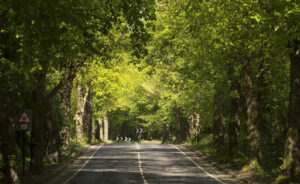Arboricultural Consultancy: Your Partner in Sustainable Tree Care
arboricultural consultancy in UK
Arboricultural consultancy plays a vital role in promoting sustainable tree care and management, especially in urban and suburban environments. As trees become increasingly recognized for their ecological, aesthetic, and health benefits, the need for expert guidance on their care and preservation is more crucial than ever. In this article, we’ll explore the various aspects of arboricultural consultancy in UK, its significance in sustainable tree management, and how engaging a consultant can ensure the longevity and health of your trees.
What is Arboricultural Consultancy?
Arboricultural consultancy involves professional services that focus on the health, safety, and sustainability of trees. This field encompasses a wide range of services, including:
- Tree Health Assessments: Evaluating the condition of trees to identify diseases, pests, and structural weaknesses.
- Risk Assessment: Analyzing trees for potential hazards they may pose to people and property.
- Management Planning: Developing comprehensive management plans for the care and preservation of trees.
- Tree Preservation Orders (TPOs): Advising on legal protections for trees to ensure their preservation during development projects.
- Tree Planting Strategies: Recommending suitable species for planting in specific environments to enhance biodiversity and ecosystem services.
The Importance of Arboricultural Consultancy in Sustainable Tree Care
1. Enhancing Biodiversity
Arboricultural consultants play a crucial role in promoting biodiversity through sustainable tree management practices. Trees are essential components of ecosystems, providing habitat and food for various species. By ensuring the health of existing trees and recommending the planting of native species, consultants can enhance local biodiversity. Native trees are particularly important as they support local wildlife, including birds, insects, and mammals that depend on these plants for survival.
2. Urban Greening
In urban areas, trees offer numerous benefits, including improving air quality, reducing urban heat islands, and enhancing the aesthetic value of neighborhoods. Arboricultural consultants help city planners and developers integrate trees into urban designs. This not only contributes to a more livable environment but also mitigates the impacts of climate change. Strategies may include selecting appropriate tree species for streets and parks, ensuring adequate space for root growth, and developing maintenance plans to keep urban forests healthy.
3. Climate Change Mitigation
Trees act as carbon sinks, absorbing carbon dioxide from the atmosphere and storing carbon in their biomass. Arboricultural consultancy focuses on managing trees in a way that maximizes their carbon sequestration potential. This can involve assessing tree health, recommending pruning practices to promote growth, and advising on the planting of new trees to offset carbon emissions. By enhancing tree health and longevity, consultants help communities contribute to climate change mitigation efforts.
4. Aesthetic and Property Value Enhancement
Well-maintained trees significantly enhance the beauty and value of properties. Arboricultural consultants provide recommendations for tree selection and placement to maximize curb appeal. They also offer guidance on maintenance practices to keep trees healthy and attractive. Homeowners and property managers who invest in professional tree care can see substantial returns in property value and aesthetics, making arboricultural consultancy a wise investment.

Key Services Offered by Arboricultural Consultants
1. Tree Surveys and Assessments
Arboricultural consultants conduct thorough tree surveys to assess the health, stability, and safety of trees on a property. These assessments may include:
- Visual Inspections: Checking for visible signs of disease, decay, or structural weaknesses.
- Soil Testing: Evaluating soil conditions to ensure trees have a suitable growing environment.
- Root Assessment: Investigating root systems to identify potential issues that may affect tree stability.
2. Management Plans
Once a tree survey is complete, consultants develop management plans tailored to the specific needs of the property. These plans may include:
- Maintenance Recommendations: Pruning schedules, pest management strategies, and soil enhancement practices.
- Planting Plans: Guidance on the selection and placement of new trees to enhance biodiversity and aesthetics.
- Long-Term Care Strategies: Plans for ongoing monitoring and care to ensure the long-term health of trees.
3. Risk Assessments
Arboricultural consultants perform risk assessments to identify potential hazards posed by trees. This is particularly important for trees located near homes, roads, and public spaces. Key components of risk assessments include:
- Tree Stability Evaluation: Assessing the structural integrity of trees to identify risks of failure.
- Hazard Identification: Identifying trees with potential for falling branches or complete failure.
- Recommendations for Mitigation: Providing actionable steps to reduce risks, such as pruning, cabling, or removal of hazardous trees.
4. Legal Compliance and Tree Preservation
Consultants assist property owners and developers in navigating legal regulations related to tree preservation. This includes:
- Understanding Tree Preservation Orders (TPOs): Advising on the implications of TPOs and how to comply with local regulations.
- Application for Permits: Assisting with the necessary paperwork and procedures to legally remove or prune protected trees.
- Preservation Strategies During Development: Recommending practices to protect trees during construction activities.
Choosing the Right Arboricultural Consultant
1. Qualifications and Certifications
When selecting an arboricultural consultant, it’s essential to verify their qualifications and certifications. Look for individuals who are accredited by recognized organizations, such as the International Society of Arboriculture (ISA) or the Arboricultural Association. These credentials demonstrate a commitment to professional standards and ongoing education in the field.
2. Experience and Expertise
Consider the consultant’s experience and areas of expertise. Look for professionals who have a proven track record in managing trees similar to those on your property. Experience in urban forestry, residential tree care, or commercial landscape management can influence the quality of service provided.
3. Client Testimonials and References
Seek testimonials and references from previous clients to gauge the consultant’s reputation and reliability. Positive feedback from satisfied clients can provide confidence in the consultant’s abilities and approach.
4. Comprehensive Services
Choose a consultant who offers a wide range of services, from tree assessments to management planning. A comprehensive approach ensures that all aspects of tree care are addressed and that the consultant can provide ongoing support as your needs evolve.
Benefits of Engaging Arboricultural Consultancy
1. Cost Savings
Investing in professional tree care can lead to significant cost savings in the long run. Early identification of tree issues can prevent costly damage to property and reduce the likelihood of expensive tree removal. Furthermore, proper maintenance extends the life of trees, delaying the need for replacement.
2. Enhanced Property Value
Well-maintained trees add value to properties. A landscape that includes healthy trees is more appealing to potential buyers and renters, making arboricultural consultancy a smart investment for property owners. Properly cared-for trees can enhance the overall marketability of a property.
3. Environmental Benefits
Trees provide numerous environmental benefits, including improved air quality, reduced stormwater runoff, and increased habitat for wildlife. By engaging an arboricultural consultant, property owners can ensure that their trees contribute positively to the local environment.
4. Professional Expertise
Arboricultural consultants bring specialized knowledge and skills to tree care. Their expertise allows them to identify issues that may not be immediately apparent to the untrained eye. This professional insight ensures that trees receive the best possible care, promoting long-term health and stability.
Case Studies: Successful Arboricultural Consultancy
Case Study 1: Urban Park Revitalization
An urban park faced declining tree health due to poor soil conditions and pest infestations. An arboricultural consultant was hired to conduct a thorough assessment and develop a management plan. The consultant recommended soil amendments, targeted pest control measures, and a tree replacement strategy to enhance biodiversity. Over the following years, the park flourished, with increased visitor numbers and improved ecosystem health.
Case Study 2: Residential Property Management
A homeowner noticed signs of decay in a large oak tree near their house. Concerned about safety, they sought the expertise of an arboricultural consultant. The consultant conducted a detailed inspection, identifying structural weaknesses and recommending targeted pruning to improve stability. The homeowner was relieved to avoid costly removal while ensuring the tree’s health and safety.
Conclusion
Arboricultural consultancy is an essential component of sustainable tree care, offering professional guidance and support for tree management. With the increasing recognition of trees’ importance in urban and rural environments, the expertise of arboricultural consultants is more vital than ever. By engaging these professionals, property owners can enhance the health, safety, and longevity of their trees while contributing positively to the environment. Sustainable tree management not only benefits individual properties but also supports the broader ecosystem, ensuring that trees continue to thrive for generations to come.


